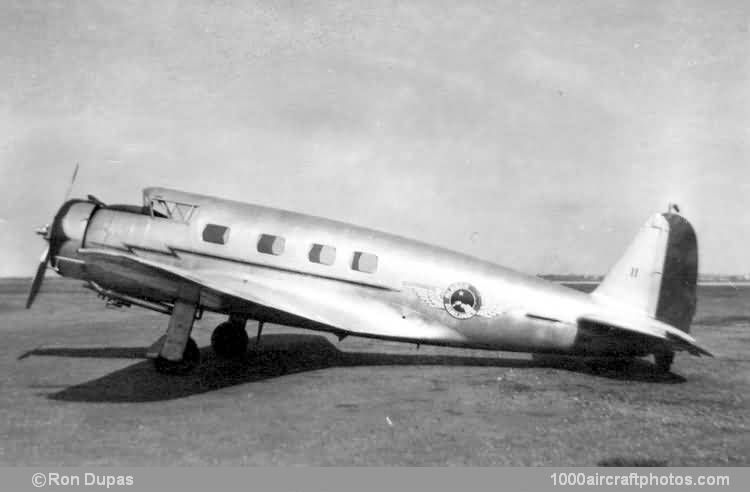Powered by a 650 hp Wright SR-1820-F2 Cyclone nine-cylinder air-cooled radial engine, it could carry one crew and eight passengers. The prototype V-1 was built by the Aircraft Development Corporation at Glendale, California, and registered NX12293 (c/n 1) it was flown for the first time by Marshall Headle on February 19, 1933, and it gained its Type Certificate in July 1934.
The type was produced in series as the slightly larger V-1A, powered by a 735 hp Cyclone. It was to be operated by a two-men crew, a pilot and an engineer. The V-1AD was a six-passenger deluxe version that was powered by an 850 hp Cyclone.
The major operator was American Airlines, which used the prototype for early route-proving and then ordered an additional nine V-1As for its Fort Worth – St. Louis – Chicago service, these nine were delivered between July 1934 and February 1935. Eventually the airline acquired two more second-hand. American Airlines V-1A service started in September 1934 but didn't last very long, by 1937 the airline had disposed all of them.
The last of the high performance single-engine commercial airplanes was probably also the fastest. It set a number of impressive point-to-point records, beginning on January 14, 1935 with a flight from Burbank, California to Floyd Bennet Field, New York by Jimmy Doolittle in 11 hr 15 min, using the eighth
V-1A NC13770.
A V-1AD, NC16099, fitted with an 1,000 hp Cyclone and long-range tanks was flown across the North Atlantic in September 1936 by Henry T. 'Dick' Merrill and Harry Richman, in an attempt to make the first New York – London – New York return flight. This flight became known as the 'Ping-Pong Flight', as 41,000 pong-pong balls had been stowed in empty spaces in the wings and fuselages, to insure flotation in case of a forced ditch into the Atlantic.
The last V-1 produced was the sole V-1AS twin-EDO float version of the V-1A built for the Soviet government. It featured additional fuel tanks in the cabin, an enlarged vertical tail, and a special cold-weather cowling. It took pilots Sigismund Levanevski and Victor Levchenko five and a half week during August-September 1936 to fly the aircraft the 10,000 mls (16,093 km) from Santa Monica to Moscow, via Alaska and Siberia. In October 1938 manufacturing rights were sold to USSR in October 1936, but production plans did not materialize.
In all 27 V-1s were produced, most of them went to oil, newspaper and other companies as corporate transports. For a full production breakdown, view the listing, transcribed from the Golden Years of Aviation Registry. Note that fifteen ended up in Spain for use in the Civil War.
Thanks to (former) Alaska Airlines employees for their input, also thanks to Don Conrard, Bob Forshaw, Lars Opland and Mike Tobin."
Span: 50 ft 0 in (15.24 m)
Length: 37 ft 0 in (11.28 m)
Height: 10 ft 2 in (3.10 m)
Wing area: 384 sq.ft (35.67 sq.m)
Weight empty: 5,307 lb (2,407 kg)
Loaded weight: 8,500 lb (3,856 kg)
Max speed: 235 mph (378 kmh)
Cruise speed: 215 mph (346 kmh)
Landing speed: 65 mph (105 kmh)
Service ceiling: 20,000 ft (6,096 m)
Range: 1,000 mls (1,609 km)
